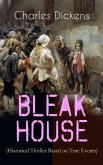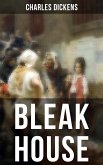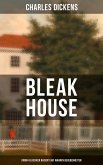In "Bleak House," Charles Dickens offers a profound critique of the British legal system while weaving a complex narrative interlaced with themes of social injustice, class disparity, and the intricate interdependencies of human lives. Unique in its structure, the novel employs a dual narrative; one through the perspective of the omniscient narrator and the other through the eyes of the astute and determined Esther Summerson. Dickens's vivid characterizations and rich descriptions bring to life a panorama of Victorian society, all framed within the pursuit of the interminable case of Jarndyce vs. Jarndyce, which allegorizes the futility of bureaucracy and the devastating effects of inaction amidst legal entanglements. Charles Dickens, born in 1812, drew upon his own experiences of poverty and social inequality, having endured a challenging childhood marked by financial instability and the injustices of the workhouse. His deep empathy for the underprivileged is palpably reflected in "Bleak House," where he employs wit and sharp social commentary to illuminate the plight of individuals ensnared by an indifferent system. Dickens's personal history, combined with his literary prowess, inspires a narrative that resonates with urgency and relevance. This timeless classic is essential reading for anyone interested in the intersection of law and society or the exploration of human resilience in the face of systemic oppression. "Bleak House" remains not only a great literary work but a vital reminder of the need for reform, making it a significant contribution to both literature and social philosophy.
Dieser Download kann aus rechtlichen Gründen nur mit Rechnungsadresse in A, B, BG, CY, CZ, D, DK, EW, E, FIN, F, GR, H, IRL, I, LT, L, LR, M, NL, PL, P, R, S, SLO, SK ausgeliefert werden.









